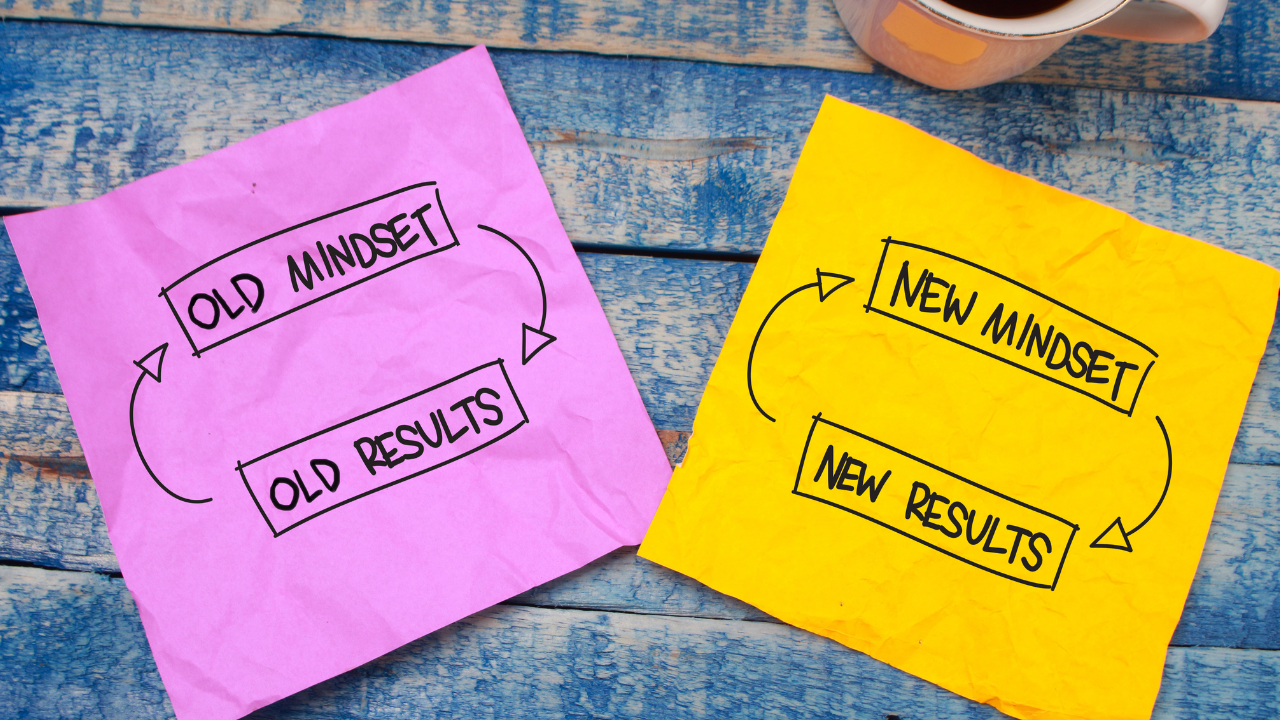Meaningful change mindsets for change managers
Change is hard for everyone, from leaders at the top to team members at various levels.
Surprisingly, it can sometimes be challenging to convince leaders who want a change of the radical mindset shift needed to lead a large-scale transformation and inspire others to feel positive about it.
37% of organizations consider technology and digital transformation the top change management concerns in 2024. While essential for organizational growth and revenue increases, these changes will require huge mindset shifts for staff at every level, which is never easy.
Luckily, one of the most interesting emerging change management thought leaders, Leslie Ellis, from the change management network ACMP Carolinas, has the answers. She spoke eloquently about this topic at the LeadChange™ 2023 event, a conference of change professionals who all benefited from her insights.
If you have read the article and are still yearning for another perspective on changing mindsets, check out the podcast: The Case for a Different Mindset about Change with Rika Andersen.
But let’s get back to this article, which explores five steps to achieving meaningful change mindsets for change managers, beginning with defining one’s beliefs.
5 Tips for Meaningful Change Mindsets for Change Managers
Change is not easy, but it can be more straightforward if you follow a structured list of tips that help you take a patient, human approach. Using these five tips in the list below, you can support leaders in seeing, feeling, and carrying out change and inspire others to do the same.
Begin by defining your beliefs. This first step will help you support clients in focusing on what they want to achieve with the change and any barriers they may encounter.
1. Define your beliefs
“What are your hopes and fears around that particular shift in mindset?”
Leslie Ellis, LeadChange™ 2023
First, encourage your client to consider what might shift in their mindset, such as moving from focusing on output to focusing on results. Spend some time reflecting, perhaps over coffee, and ask them to write down their beliefs about this change—the good, bad, and ugly. These notes are just for them; they don’t need to share them.
Ask them to identify the beliefs and fears you have about this shift. Examine the stories they’ve told themselves—are they true? Determine which limitations are self-imposed, company-based, or from past experiences. Clarify what’s real versus what’s imaginary about these beliefs. Finally, tell them to decide if they will make the change.
2. Put your new mindset into action
“One of the first behaviors I change is language.”
Leslie Ellis, LeadChange™ 2023
“One of the first behaviors I encourage changing is your language. What you say is closely related to your thoughts; it’s a behavior and an action. Our words often drive further behavioral changes, making the process easier.”
Start by altering your questions. For example, if transitioning from focusing on output to focusing on results, discuss results with your change teams. Ask questions like, “How will we achieve these results?” and “What do we hope to accomplish?” Instead of merely asking, “How do we get the survey out?” focus on the desired outcome.
Understand that the purpose of the survey is likely more significant than just its completion. Clarify the result you aim to achieve and how this outcome supports the overall change process. Consider how the result will be integrated and established. Focus on the results you want to achieve, ensuring they drive your change efforts.
3. Give yourself enough time for supporting actions
“Mindset changes require commitment.”
Leslie Ellis, LeadChange™ 2023
First, change your language. Then, take additional supporting actions. Let’s discuss some possible actions because mindset changes don’t have quick fixes. Rarely does deciding to change your mindset instantly align everything.
We live in an instant gratification society, but mindset changes require commitment, practice, and time. Some mindset shifts might be easier for you than others, and that’s okay.
You can start practicing any of these imperfectly right now. Remember, we’re all human, and it will initially feel awkward and uncomfortable. When you start by changing your language, it might feel strange, and you might fumble. That’s okay. People will understand what you’re asking and appreciate your effort.
For instance, you might ask, “What’s the result we’re aiming for?” and spark a discussion that rethinks the approach. Embrace the imperfection and keep practicing. We’ll look at each action in detail; there’s plenty of time to explore these changes.
4. Focus on results with process thinking
“Clarify why we are doing this. What are we trying to achieve?”
Leslie Ellis, LeadChange™ 2023
Focus on delivering results by putting these ideas into practice. First and foremost, clarify why you are doing this. What are you trying to achieve? Ask about the end-to-end process steps for each activity in your change process.
Consider through every step, whether it’s a survey, workshop, team meeting, town hall, or webinar. Cultivate your thinking ability and consider what is required to ensure each activity achieves its intended results.
After planning, run the event or activity. Then, consider what happens next and how to connect it to your plan. We’ve all seen projects that create something only for it to sit unused.
Process thinking can seem abstract, but it’s about understanding the step-by-step process of making activities come together and support each other. This approach leads to systems thinking, where you understand how all these processes relate and work together.
Clarify the ‘why,’ think through each step, and review the end-to-end process to ensure you don’t miss anything. This approach helps achieve the desired results and supports the overall change effort.
5. Explore and confront your limiting beliefs
“Avoid making decisions based on timeline and budget constraints.”
Leslie Ellis, LeadChange™ 2023
Lastly, help your client explore your limiting beliefs around the change. Avoid making decisions solely based on timeline and budget constraints. Project managers (PMs) receive training to focus on timeline, scope, and budget, ensuring everything adheres to these parameters.
However, decisions made solely on these factors often undermine the desired results. If achieving results conflicts with timeline and budget constraints, it calls for a broader conversation, potentially escalating to governance structures for decision-making.
Encourage focusing on results rather than just timelines and budgets. Making decisions based only on these constraints can lead to ineffective changes, unnecessary rework, frustration, and increased costs.
Take a proactive approach by designing and gaining alignment on handling future issues, emerging information, and challenges. Anticipating changes is invaluable in a change effort. If you can’t predict every issue, plan how to manage them when they arise. This approach ensures changes yield the desired results and minimizes rework and frustration.
Be patient when supporting leaders to change mindsets
Supporting leaders in changing mindsets requires patience.
Change never happens overnight. It involves commitment, practice, and time. Encourage leaders to be kind to themselves, focus on results, explore limiting beliefs, and avoid decisions solely based on timelines and budgets.
Change managers can support leaders to achieve meaningful and lasting change with persistence and a proactive approach.
If you found this article fascinating and are curious to learn more, join our LeadChange™ 2024 talk in November for diverse insights for action on change management.







